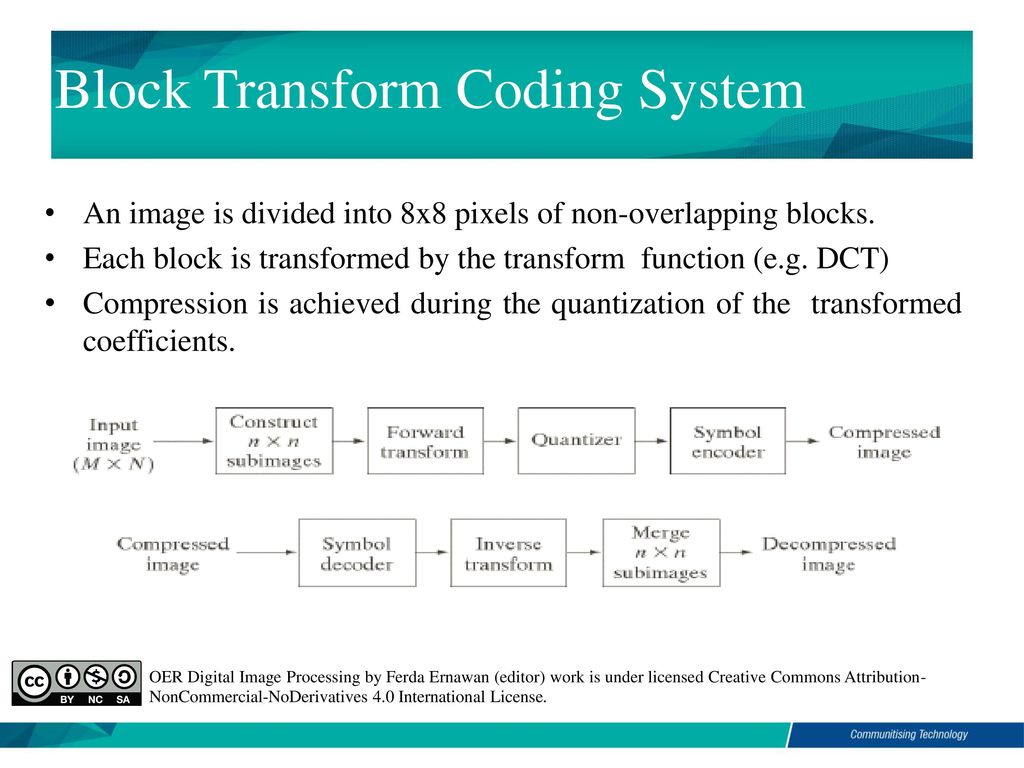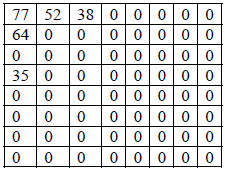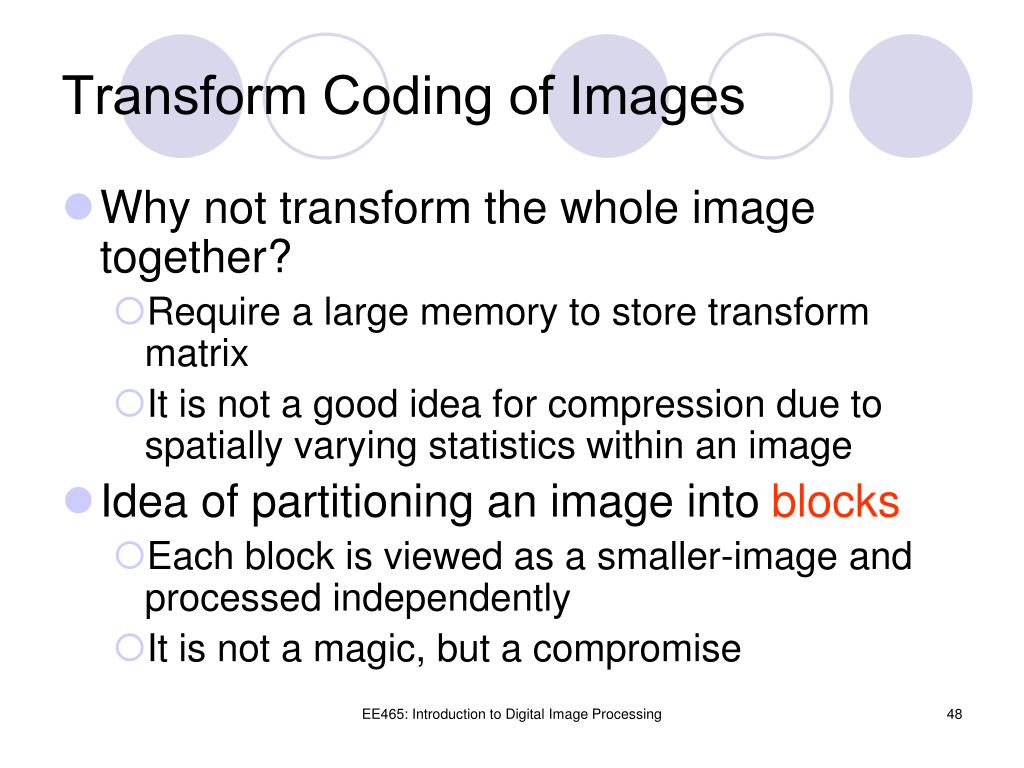Block Transform Coding
Block transform coding. EE398A Image and Video Compression Transform Coding no. Transform coding is also referred to as block quantization Huang and Schultheiss 1963 and input blocks used for an Nth order transform will in fact be N samples long. It exploits the fact that for typical images a large amount of signal energy is concentrated in a small number of coefficients.
Transform coding is a frequency-domain approach like sub-band coding SBC. Handbook of Image and Video Processing Second Edition 2005. EE368b Image and Video Compression Transform Coding no.
Transform methods are typically used in filtering compression and image texture analysis. 11 DCT n Type II-DCT of blocksize MxM is defined by transform matrix A containing elements n 2D basis functions of the DCT. Block transforms make use of the high degree of correlation between adjacent image pixels to provide energy compaction or coding gain in the transformed domain.
A ik a i cos p2k 1i 2 M for ik 0M 1 with a 0 1 M a i 2 M i 0 Bernd Girod. Dct block_struct T block_structdata T. Yao Wang 2003 Waveform-based video coding 7 General Linear Transform Basis vectors or blocks.
Yao Wang 2006 EE3414. Typical DCT coding artifacts. DCT coding with increasingly coarse quantization block size 8x8.
Discard all but 10 of the 64 DCT coefficients in each block. Is defined by transform matrix A containing elements π α α α 0 2 1 cos 2 0 1 with 1 2 0 ik i i ki a M ik M M i M Thomas Wiegand. Transform Coding 1 Transform Coding.
The transforms used in video encoders are unitary which means that the transform operation has an inverse operation that uniquely reconstructs the original input. T dctmtx 8.
Transform coding is a frequency-domain approach like sub-band coding SBC.
In some transform form data can be more. 2 Introductions Original Data Transformation Quantization Channel Decoder Inverse Transformation Reconstructed Data 3 Introductions. The function dctmtx returns the N-by-N DCT transform matrix. Transform methods are typically used in filtering compression and image texture analysis. Discard all but 10 of the 64 DCT coefficients in each block. Block transforms make use of the high degree of correlation between adjacent image pixels to provide energy compaction or coding gain in the transformed domain. Is defined by transform matrix A containing elements π α α α 0 2 1 cos 2 0 1 with 1 2 0 ik i i ki a M ik M M i M Thomas Wiegand. It is one of the type of Lossy Compression Algorithm. It exploits the fact that for typical images a large amount of signal energy is concentrated in a small number of coefficients.
Compute the two-dimensional DCT of 8-by-8 blocks in the image. Boundaries between subimages become visible. A ik a i cos p2k 1i 2 M for ik 0M 1 with a 0 1 M a i 2 M i 0 Bernd Girod. Block DCT coding is the basis of many international multimedia compression standards from JPEG for still images to the MPEG family for video sequences. Block Transform Coding Section 828 Image Compression-II 2 Transform coding Construct n X n subimages Forward transform Quantizer Symbol encoder N X N images Compressed image Compressed image Symbol decoder Inverse transform Merge n X n subimages Uncompressed image Blocking artifact. EE368b Image and Video Compression Transform Coding no. Yao Wang 2006 EE3414.






























Post a Comment for "Block Transform Coding"